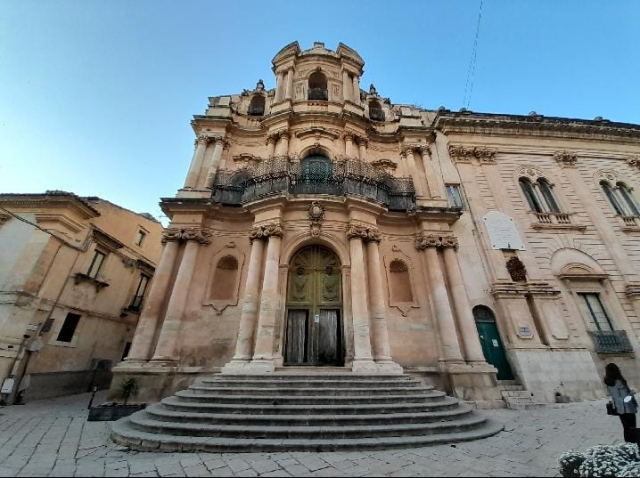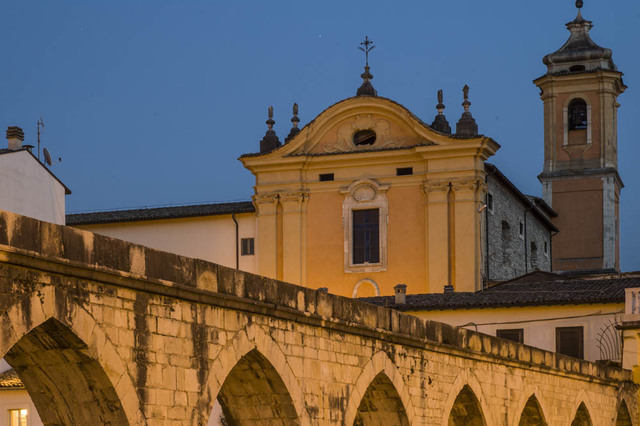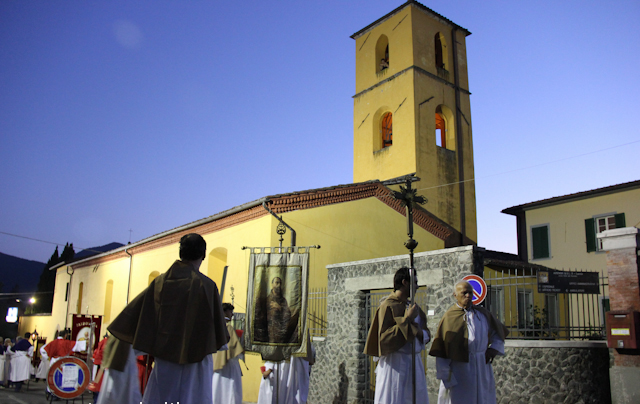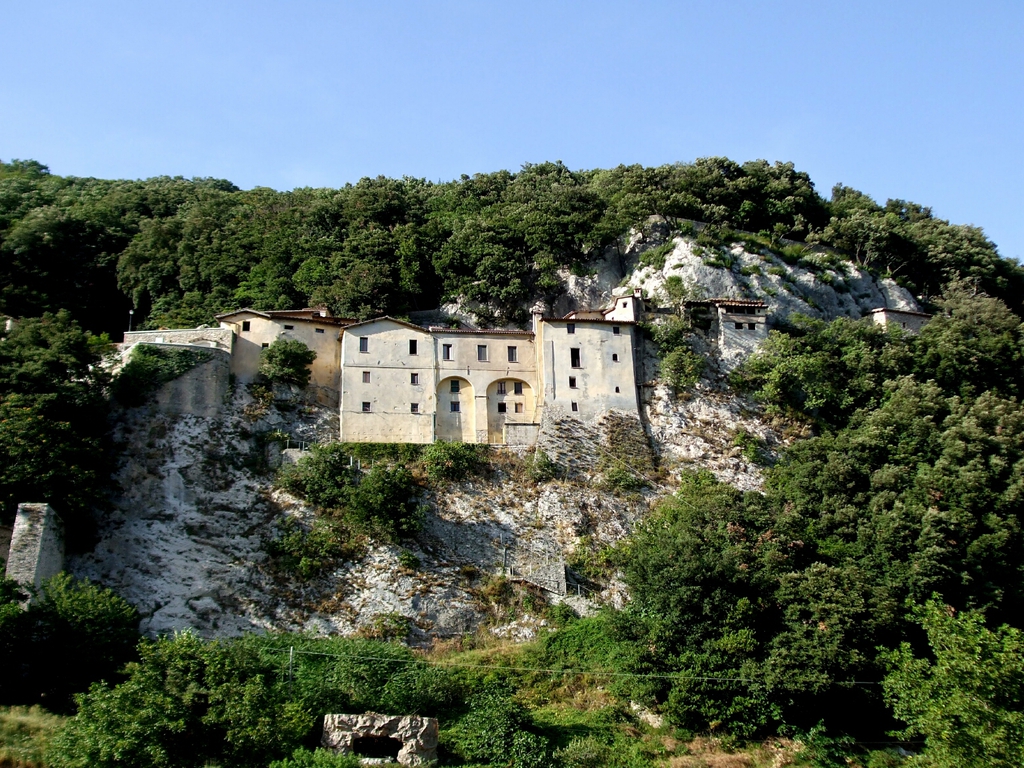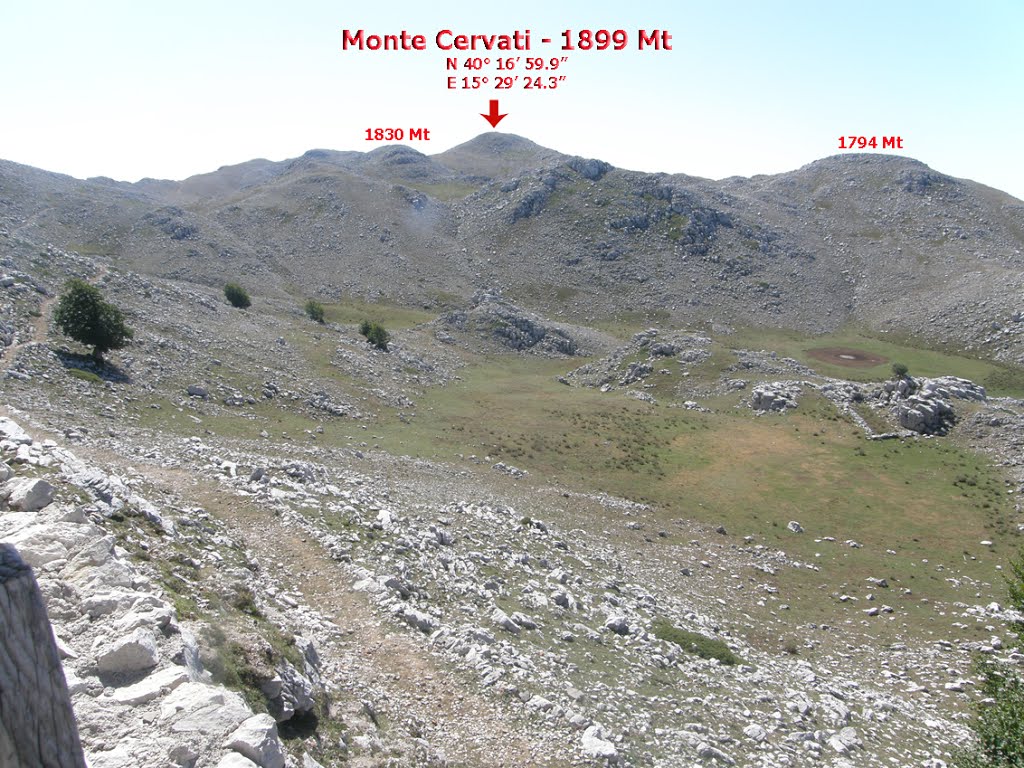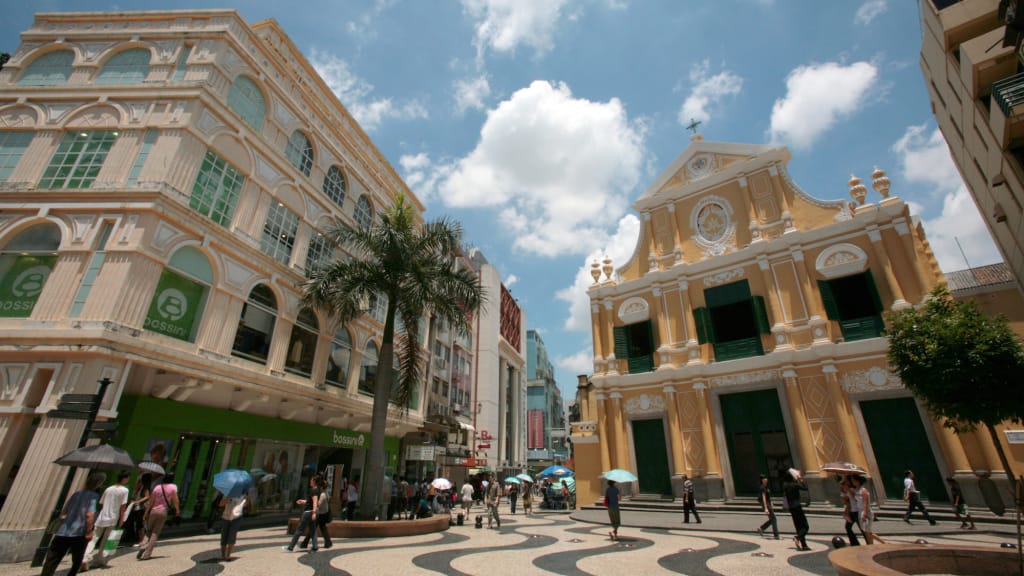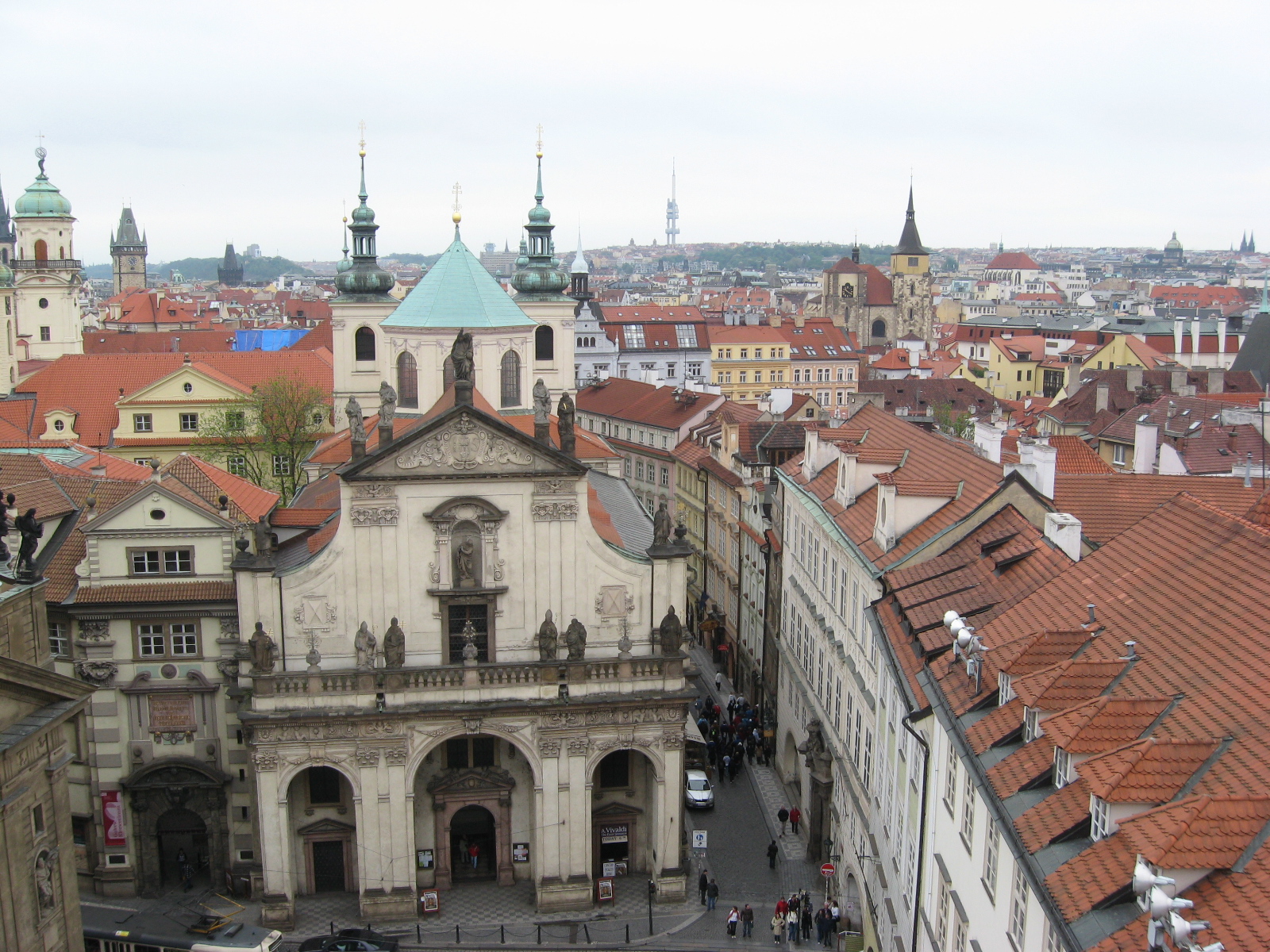St. John’s Church is adjacent to City Hall as it was originally the church associated with the Benedictine Convent.The facade has three orders with a characteristic vertical undulation typical of Val di Noto churches. In the second order, there is a wrought-iron jealousy reminiscent of the balconies of the surrounding palaces. Work on the present building began after 1760 and was directed by Alberto Maria di San Giovanni Battista, while the designs are attributed to Vincenzo Sinatra; in the 19th century there was also intervention by Salvatore Alì. The interior has an oval shape, but the church plan is an exercise in circles in which the nave, narthex and apse are located. The walls and vault are adorned with rich stucco work by Giovanni Gianforma, while the fresco on the vault depicts St. Benedict. Very striking is the play of light created by the colored windows placed at the top. In the narthex, three medallions by Giuseppe Sesta reproduce three urban panoramas.Inside the Church of St. John houses one of the city’s most significant paintings: the "Christ of Burgos," also known as the Christ in Skirts. This painting was donated to the Monastery by its foundress, Donna Giovanna Di Stefano. After careful research, thanks to the help of an art historian from the University of Burgos, it was possible to confirm the author: the painting is by Juan de Palazín, a painter active in the late seventeenth and early eighteenth centuries in the Medina del Campo region.It is a rare depiction in Italy, but very common in the Spanish tradition. In fact, there is a copy of the painting currently housed in the hermitage of "Nuestra Señora del Amparo" in Medina del Campo, a sculpture preserved in the Cathedral of Burgos, and other canvases similar to the one imported to Sicily, painted by different authors and found throughout Spain.The church is still open for worship and hosts the Our Lady of Sorrows of St. John, a procession that recalls Spanish customs and traditions, and is also home to the War Memorial. This sacred place combines spirituality, history and traditions, representing an important landmark for the local community.
